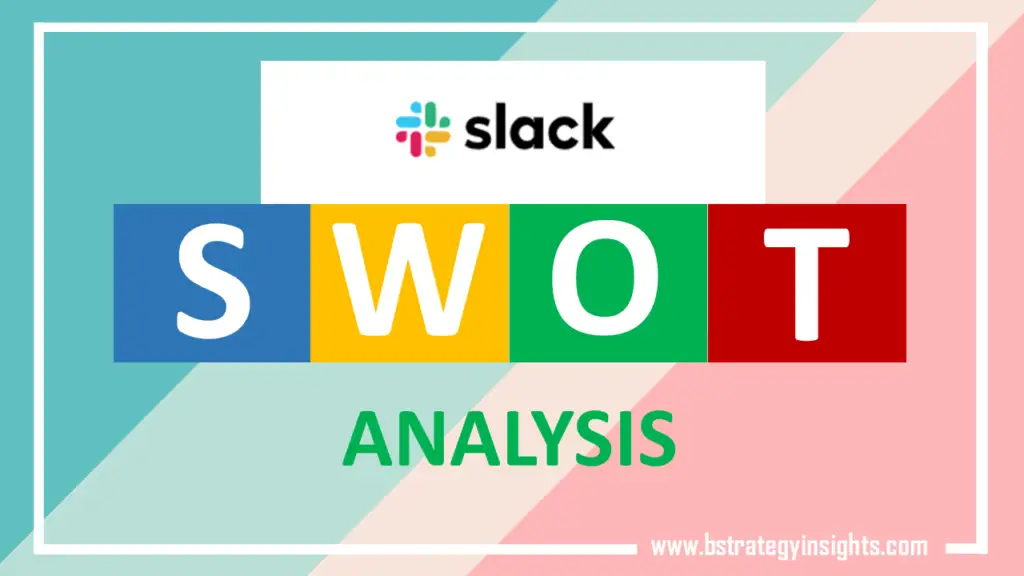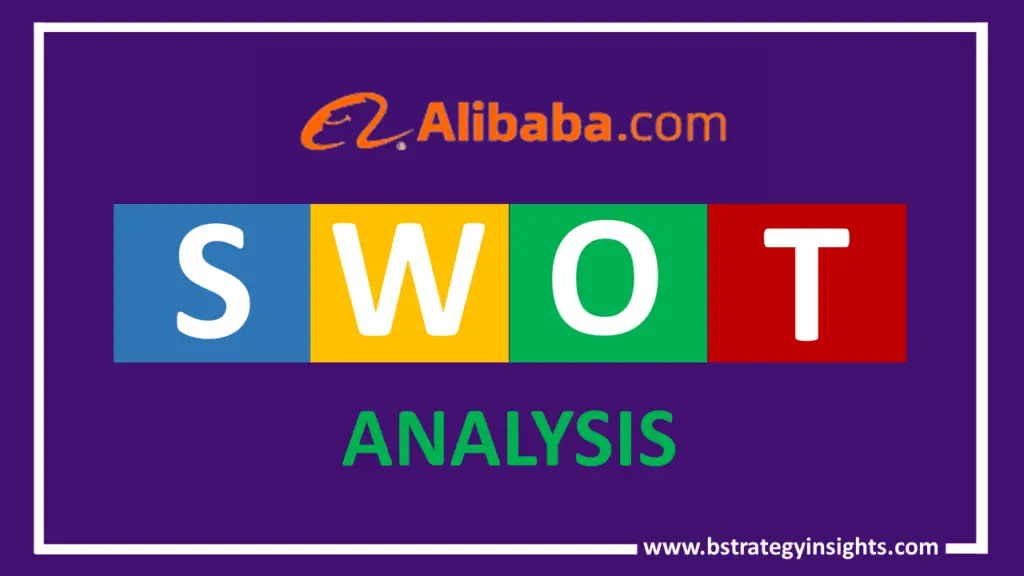
Slack is a messaging app for businesses that seek to link people to the information they need for their businesses. It helps connect teams together, unify systems and drive businesses. It works by bringing the right people, tools, and information together to ensure work is done. With such a huge undertaking, SWOT analysis would be a critical tool in ensuring the delivery of the company’s mandate.
SWOT analysis is a proven tool that organizations have used to determine their standing in the market. It is an eye-opener to the realities of the business, whether it is a strong company or weak, whether its future is threatened or is bright and full of opportunities. Whereas it takes effort to undertake a SWOT analysis, it is strongly recommended if a company will avoid blindly operating in the marketplace.
In this article, we cover Slack’s SWOT analysis containing both internal and external strategic factors. So keep reading to get to know more about the SWOT analysis of Slack.
Slack – At a Glance
| Name | Slack |
| Website | https://slack.com/ |
| Founders | Stewart Butterfield, Eric Costello, Cal Henderson, and Serguei Mourachov[1] |
| Chief Executive Officer (C.E.O.) | Stewart Butterfield |
| Tagline | Work hard and go home |
| Headquarters | San Francisco, California, United States |
| Type of Corporation | Public |
| Year Founded | 2006 |
| Revenues (2020) | $630 million |
| Key Products/Services | Business communication |
| Key Competitors | Realtor.com · BoldLeads CRM · G2 Storefront · Zumper · LoopNet · CoreLogic Matrix · Redfin · Apartments.com. |
Slack’s Strengths
Great customer satisfaction
Slack has a positive social sentiment with great reviews from customers across the majority of customer review sites. Slack is rated 8.9 out of 10 (4,132 reviews) on TrustRadius.com, 4.5 out of 5 stars (27,837) on g2.com, 4.5 out of 5 (20,401 reviews) stars on softwareadvice.com, 4.6 out of 5 (6,138 reviews) on gatner.com, 4.6 stars out of 5 (20,407 votes, 5 stars at TechRadar, 96% on software pundit and 4.3 on TrustPilot.
Given the majority of the rating sites have the same opinion about Slack, it is safe to conclude that great customer satisfaction is indeed a strength on the part of Slack. It assures the brand of customer loyalty, increased revenues through customer referrals, increased market share, and continued growth of the brand. Slack’s customers mentioned some of the aspects of Slack include great integrations, a great communication tool for small businesses and teams, high-efficiency levels for collaboration, powerful interface, and scalability.
Strong product.
Slack provides incredible ways for teams to communicate; it is faster, more secure, and better organized. The product provides more integration of numerous services in a single place to overcome the task-switching challenges. The product offers real-time messaging, search for modern teams, and archiving, among others. It is compatible with all platforms. When ranked compared to its competitors, the brand comes in second. Therefore, the brand offers a strong product that can provide solutions to the real needs of businesses and workforces.
Product innovation
Slack was originally created to be an internal communication tool in Tiny Speck, a small company in Butterfield. The company has innovated and grown its product into a global solution. In 2018, the brand innovated the conversion of talk into tasks through connected apps that are installed in the workspace. It also enhanced its search functionality and incorporated predictive abilities and speed from basic messaging to chat rooms, intuitive interface, channels, star responses, and playful features to increase the fun in communication. Slack is investing heavily into innovation to help keep in tandem with the changing trends at work—for instance, shifting to hybrid workspaces from traditional office workspaces. Strong brand. It is crucial that Slack invests in continuous innovation to elongate its product life-cycle, increase revenues, and increase profitability.
A market leader
Slack is a leader in software communication products for business. According to comparably.com, Slack comes in second in ranking when compared to its competitors. Gartner.com has Slack top on its list when compared to its competitors, including office 365, Atlassian Confluence, and Google workspace, among others.
Pricing
Slack is basically a free product. This strategy is very attractive to price-sensitive markets that are the majority.
Slack’s Weaknesses
Limited features
While Slack is primarily a free service, the majority of the critical features needed for optimal experience are paid for. Unfortunately, this can turn out to be pricey, particularly for start-ups that may not have huge budgets.
Limited product portfolio
Slack is a great product but limited in its features like a calendar for scheduling meetings and due dates. Additionally, with the evolution to hybrid workspaces, Slack’s product becomes limited in that it fails to offer such functional features like virtual meetings and related features. This gap in its service offerings could have the company lose its customers to a more robust product in the market.
Slack’s Opportunities
Technological innovation
Technological innovation holds great leverage for the growth and expansion of Slack. Technology offers more ways for Slack to bridge the gap in its product offering to sufficiently and effectively offer the much-needed solutions in the marketplace. In addition, technology offers efficiency that helps cuts costs and increases the precision of service delivery.
Post COVID work demands
With the advent of COVID, workspaces experienced tremendous changes that have created more opportunities for communication tools to enhance teamwork from distributed locations. This is a great opportunity for Slack. Analysts perceive that demand for business communication tools to facilitate efficiency in office operation will keep going higher and higher. Slack needs to strategically position its product for this opportunity.
Strategic acquisition, collaboration, and partnerships
Strategic acquisitions and partnerships are key ways that help provide synergies for Slack in expanding its horizons in the market and in enriching its customer experience.
Slack’s Threats
Competition
Slack faces fierce competition both directly and indirectly. Direct competitors include Atlassian Confluence, google workspace, office 385, and Adobe Acrobat. With the changes brought about by COVID, Slack faces indirect competition from Zoom and google meet, among others. It is important for Slack to grow its product portfolio so as to effectively compete with the indirect competition that offers critical solutions for the present crisis.
Unfavorable technological changes
Technology is changing at an amazingly first-rate so that technology that was in use currently becomes obsolete within no time. To gird against such eventualities, Slack should invest in continuous innovation to ensure they remain relevant in the market.
Conclusion
Slack is a strong market leader with heavy backing from its customers. It is impressive that its customer ratings are high; this gives it a competitive advantage over other players in the market to leverage this goodwill for expansion. There are numerous opportunities in the market for the growth of Slack, like growth in the need for virtual working spaces. But on the other side of the coin, there has arisen increased competition in the market for similar services. This calls for Slack to be more proactive in enriching its product offering to bridge any gaps that would have its customers go to other service providers for the same.


